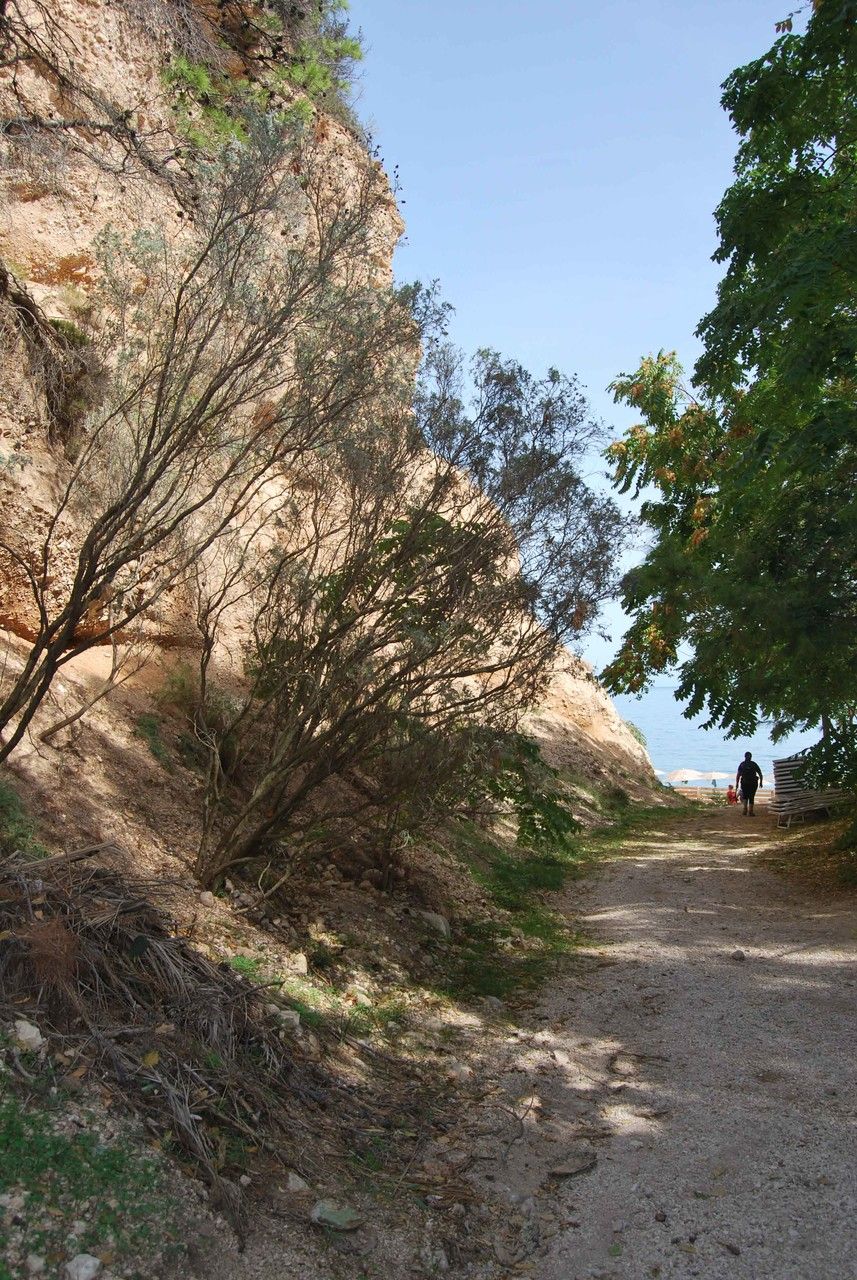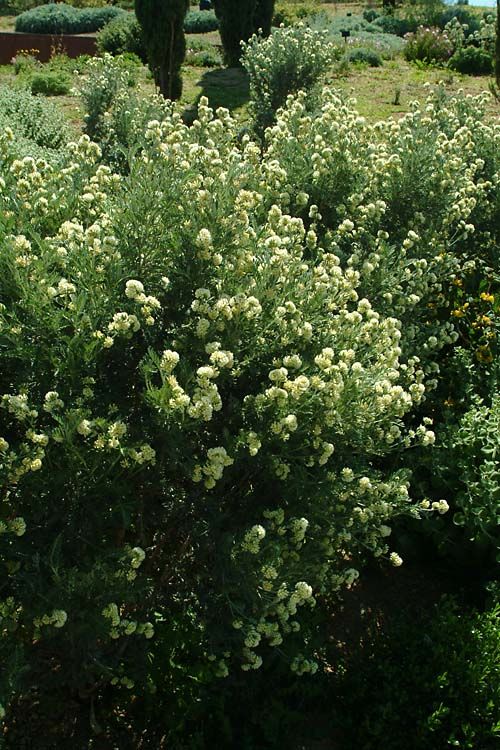Jupiter's Beard
anthyllis barba-jovis
Also known as: ["Barb of Jupiter","Jupiter's Beard"]
Overview
A deciduous shrub native to the Mediterranean region, known for its silvery foliage and bright yellow flowers.
Benefits & Perks
["long-flowering","wildlife attractant (bees, butterflies, birds)","drought tolerant","rare/collector’s item"]
Botanical Classification
| Phylum: | Magnoliophyta |
| Class: | Magnoliopsida |
| Order: | Fabales |
| Family: | Fabaceae |
| Genus: | Anthyllis |
| Botanical Name: | Anthyllis barba-jovis |
Plant Characteristics
Basic Information
- Category: Shrubs
- Suitable Location: rock garden or sunny border
- Suitable For:
- Is Weed: No
- Allergenicity: low
Environmental Needs
- Climate: {"temperatureRange":"5–35°C"}
- Hardiness: {"zones":"7–9"}
- Misting: rarely required, only if ambient humidity is very low
- Drainage: Fast-draining to prevent waterlogging.
- Soil Type: Well-draining, sandy loam with organic matter; mimics natural Mediterranean conditions.
Maintenance Level
- Maintenance Level: moderate
- Toughness Level: moderate
- Pruning Frequency: Annually in late winter or early spring before new growth begins.
- Pruning Intensity: Moderate; remove up to one-third of old growth to rejuvenate the plant.
Care Details
Ideal Sunlight Coverage:
Full sun (6–8 hours of direct sunlight daily); tolerates partial shade but may become leggy.
Sunlight Tolerance Tips:
Acclimate gradually if moving from shade to sun; protect from intense midday sun in hot climates; ensure good air circulation to prevent fungal issues.
Care Requirements
Care Difficulty
moderatemoderate
Sunlight
full sun
Rotate plant for even growth; use sheer curtains in intense sun; avoid sudden light changes.
Watering
every 7–10 days during active growth, reduce in winter
Water thoroughly but infrequently; ensure soil dries between waterings; avoid overwatering to prevent root rot.
Soil
well-drained, rocky or sandy loam
pH: Slightly alkaline to neutral (pH 6.5–7.5).
Use gritty mix; avoid heavy clay soils; ensure pH is balanced.
Temperature
Prefers temperate conditions (60–75°F or 15–24°C); tolerates mild frosts but thrives in moderate temperatures.
Protect from frost; avoid sudden temperature swings; adjust watering with temperature changes.
Fertilizing
every 4–6 weeks during spring and summer
Fertilize lightly after repotting; stop feeding in dormant periods; apply to moist soil to prevent root burn.
Propagation
Methods
Stem cuttings or division; stem cuttings are more common for home growers.
Step-by-Step Propagation Guide
- Take 4–6 inch cuttings.
- Remove lower leaves.
- Dip in rooting hormone.
- Plant in medium.
- Keep moist and warm.
Best Time: Late spring or early summer when the plant is actively growing.
Environment
Warm (70–75°F or 21–24°C), high humidity (70–80%), and bright indirect light.
Medium
Well-draining mix of perlite and peat moss or cactus soil.
Hormone
Recommended to promote root development.
Timeline
Roots develop in 4–6 weeks; establish in new pot after 2–3 months.
Tools Needed
Pruning shears, rooting hormone, small pots, misting spray bottle.
Quick Tips
Use healthy, non-flowering stems; maintain humidity with a plastic cover; avoid direct sun during rooting.
Pruning & Repotting
Pruning Guide
Method
Selective thinning of stems; cut just above a leaf node or bud.
Pruning Plan
Prune to maintain shape, encourage bushiness, and remove dead or overgrown stems.
Tools
Pruning shears, sterilizing solution, gloves.
Checklist
Sterilize tools; prune dead/damaged stems; shape the plant; clean up debris.
Repotting Guide
Best Season
Early spring before active growth starts.
Pot Size
Increase pot size by 2–3 inches in diameter; ensure good drainage holes.
Method
Remove plant gently; trim roots if needed; place in new pot with fresh soil; water lightly.
Suggestions
Repot every 2–3 years or when roots fill the pot; beneficial for growth and drainage.
Checklist
Choose appropriate pot; prepare fresh soil mix; trim roots if crowded; water after repotting.
Advanced Care Tips
Watering Mastery
Watering Checklist
Check soil moisture before watering; water deeply; ensure drainage; avoid wetting leaves.
How to Apply Water Properly
Water directly at the root zone until water drains from the bottom; ensure even moisture without waterlogging; water in the morning to reduce evaporation and fungal risk.
Watering Schedule Tips
Water deeply once every 7–10 days during active growth in spring and summer; reduce frequency to every 3–4 weeks in fall and winter. Adjust based on rainfall and soil dryness.
Soil Improvement
Add perlite or coarse sand for drainage; incorporate compost for fertility; ensure pH balance with lime if needed.
Temperature Stress Management
Signs of Temperature Issues
Wilting, yellowing leaves, or stunted growth in extreme heat; leaf drop or browning in cold stress.
Cold Stress
Slows growth; may cause leaf discoloration or dieback in prolonged cold; vulnerable to frost damage below 20°F (-6°C).
Solution: Provide frost protection in winter; move containers to sheltered spots; use mulch to insulate roots.
Hot Stress
Leaves may scorch, wilt, or drop; growth may slow in excessive heat; increased water demand.
Solution: Increase watering frequency; provide partial shade during peak heat; use mulch to retain soil moisture.
Fertilizing Guide
Fertilizing Checklist
Use balanced fertilizer; apply in spring; avoid winter feeding; dilute liquid fertilizers.
Fertilizing Method
Use a balanced, slow-release fertilizer in spring; dilute liquid fertilizer to half-strength if needed; avoid fertilizing in winter.
Common Problems & Solutions
Toxicity Warning
Cats
Non-toxicAnthyllis barba-jovis is not considered toxic to cats. There are no known toxic effects or physiological impacts associated with this plant.
⚡ Toxic If:
if eaten
Dogs
Non-toxicAnthyllis barba-jovis is not considered toxic to dogs. There are no known toxic effects or physiological impacts associated with this plant.
⚡ Toxic If:
if eaten
Humans
Non-toxicAnthyllis barba-jovis is not considered toxic to humans. There are no known toxic effects or physiological impacts associated with this plant.
⚡ Toxic If:
if eaten
Frequently Asked Questions
Q: Is Anthyllis barba-jovis toxic to pets?
A: No, it is non-toxic to dogs and cats.
Q: How often should I water Anthyllis barba-jovis?
A: Water sparingly, as it is drought-tolerant and prefers well-drained soil.
Q: Does Anthyllis barba-jovis attract wildlife?
A: Yes, it attracts bees, butterflies, and birds due to its nectar-rich flowers.
Quick Reference
| Family: | Fabaceae |
| Care: | moderate |
| Light: | full sun |
| Water: | every 7–10 days during activ |
Get Expert Care Tips
Download the Plantious app for personalized care reminders and plant identification!
Google Play App Store








